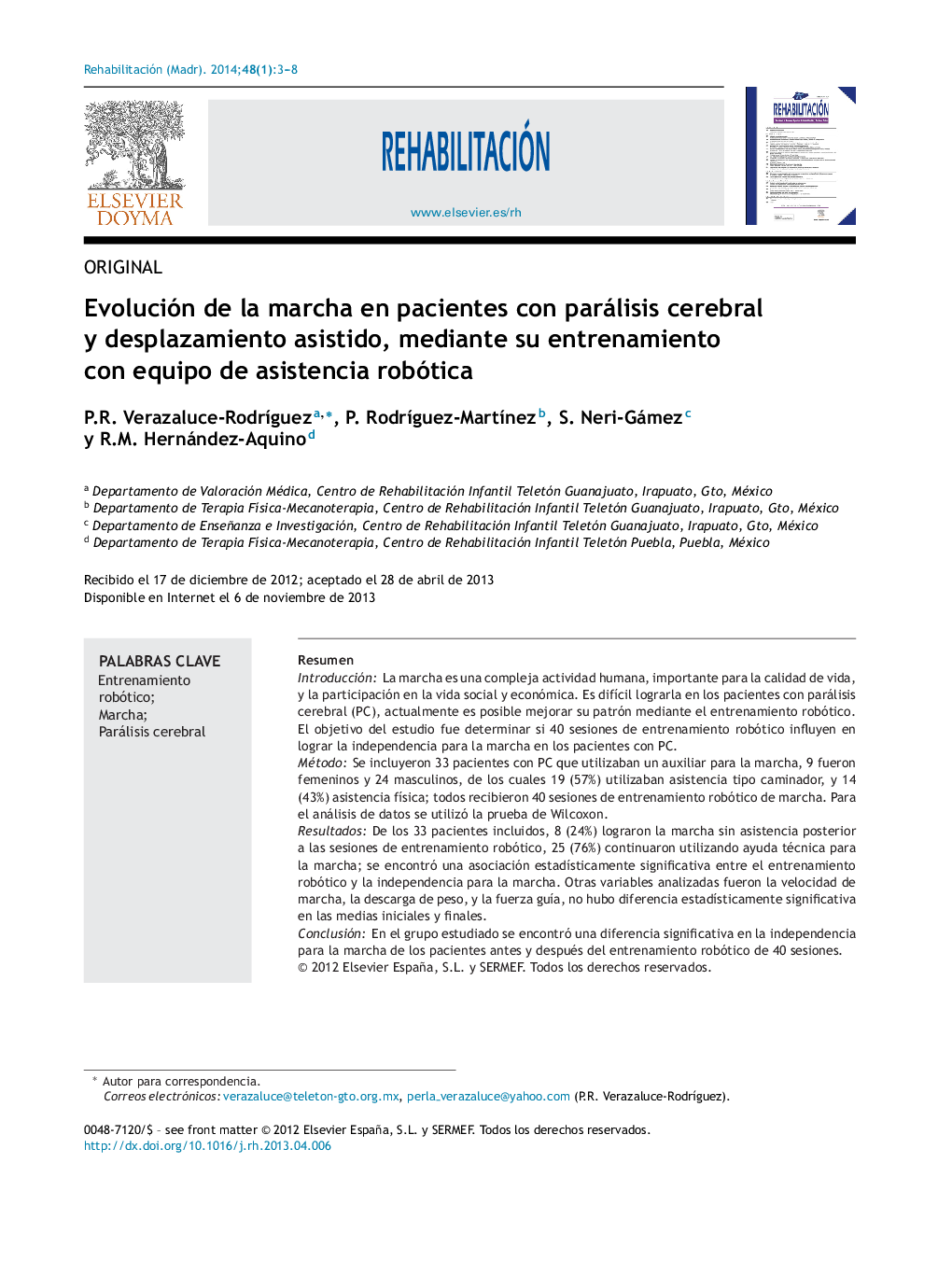| Article ID | Journal | Published Year | Pages | File Type |
|---|---|---|---|---|
| 4084852 | Rehabilitación | 2014 | 6 Pages |
ResumenIntroducciónLa marcha es una compleja actividad humana, importante para la calidad de vida, y la participación en la vida social y económica. Es difícil lograrla en los pacientes con parálisis cerebral (PC), actualmente es posible mejorar su patrón mediante el entrenamiento robótico. El objetivo del estudio fue determinar si 40 sesiones de entrenamiento robótico influyen en lograr la independencia para la marcha en los pacientes con PC.MétodoSe incluyeron 33 pacientes con PC que utilizaban un auxiliar para la marcha, 9 fueron femeninos y 24 masculinos, de los cuales 19 (57%) utilizaban asistencia tipo caminador, y 14 (43%) asistencia física; todos recibieron 40 sesiones de entrenamiento robótico de marcha. Para el análisis de datos se utilizó la prueba de Wilcoxon.ResultadosDe los 33 pacientes incluidos, 8 (24%) lograron la marcha sin asistencia posterior a las sesiones de entrenamiento robótico, 25 (76%) continuaron utilizando ayuda técnica para la marcha; se encontró una asociación estadísticamente significativa entre el entrenamiento robótico y la independencia para la marcha. Otras variables analizadas fueron la velocidad de marcha, la descarga de peso, y la fuerza guía, no hubo diferencia estadísticamente significativa en las medias iniciales y finales.ConclusiónEn el grupo estudiado se encontró una diferencia significativa en la independencia para la marcha de los pacientes antes y después del entrenamiento robótico de 40 sesiones.
IntroductionWalking is a complex human activity that is very important for quality of life, and participation in social and economic activities. It is very difficult to achieve in patients with cerebral palsy (CP). At present, it is possible to enhance their gait pattern with robotic training. The purpose of this study was to determine if 40 sessions of robotic training makes a difference in achieving walking independence in cerebral palsy patients.MethodWe included 33 patients with CP who required an auxiliary aid for walking: 9 female, 24 male, 19 (57%) of whom used a walker while 14 (43%) were helped by a family member. They all received 40 robotic walking training sessions. Data analysis was performed with the Wilcoxon test.ResultsOut of the 33 patients, 8 (24%) were able to walk without any help after attending the robotic training sessions, 25 (76%) continued using an auxiliary aid for gait. However, a statistically significant association was found between the robotic training and walking independence. Other variables analyzed included walking velocity, weight bearing and guide force. There was no statistically significant difference in the starting and final mean values.ConclusionIn the group studied, we found a significant difference in independence for the gait of patients before and after 40 sessions of robotic training.
